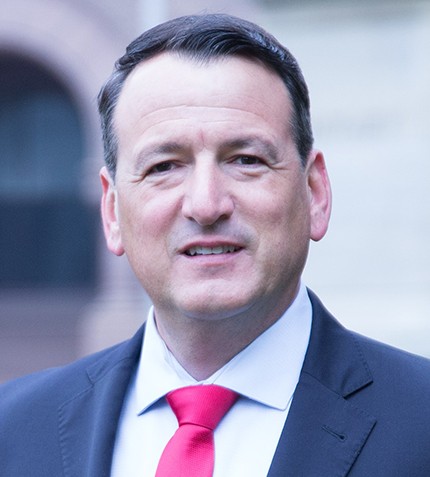
"We moved quickly as a government to signal to mining companies we would cut red tape, not just in a macro sense, but by sending swat teams into projects that are ready to move to a major milestone."
Hon. Greg Rickford
MINISTER OF ENERGY, MINES, NORTHERN DEVELOPMENT AND INDIGENOUS AFFAIRS, GOVERNMENT OF ONTARIO
How did the provincial government work with the mining industry during the initial Covid-19 outbreak?
A number of mines in Ontario moved to a hot-idle status at the end of March, and the question was how long could we afford them to shut down for, particularly as the commodity markets recovered quickly. Our mining advisory council was in contact with each of the mines to see how operations could ramp up safely. Many of the mining companies were frustrated by the fact that they had access to significant supplies of PPE and rapid testing because they operated in other parts of the world, but could not bring this into Ontario as it was not approved by the federal government.
This was an unfortunate lesson, as the PPE would have been a tremendous help to the indigenous communities in some of the far-reaching parts of Northern Ontario. We have consulted with Federal Minister of Natural Resources, Seamus O'Regan, to make sure that we will never be in this position again. The good news is, as the summer progressed, we worked closely with companies and federal government to mobilize PPE and stabilize testing capacity to safely reopen mines and northern communities.
Which measures have been taken to alleviate increased energy costs brought on by the pandemic?
Financial relief had created a marked increase in energy costs, due to the low demand of electricity across the province caused by the pandemic. This was particularly to the detriment of electricity-intensive mining operations such as Newmont’s Borden project. In response, we implemented a global adjustment smoothing policy to support medium to large electricity consumers through the deferral of a portion of the global adjustment over three months, starting in April 2020. We are now looking to address this through our annual budget so it does not arise again.
Another area we addressed was the industrial conservation initiative peak hiatus – a highly problematic phenomenon in the province of Ontario which occurred as a consequence of the disastrous energy policy of the previous government. Some businesses ended up shutting down for days when the demand for energy reached a point where the price was out of control. To help large industrial companies return to full operation, we eliminated the requirement to limit electricity during those peak hours.
To what do you attribute the new wave of mine development in Ontario?
The opening of new mines in Ontario is not a coincidence. We moved quickly as a government to signal to mining companies we would cut red tape, not just in a macro sense, but by sending swat teams into projects that are ready to move to a major milestone. Our mandate of being open for business can be validated with the mining companies, and has been exemplified through projects such as the Sugar Zone and Borden moving into production, and more recently Côté Gold. Our swat teams were proactive in disentangling certain red tape, and then moving the red tape out to legislative bundles so it never has to happen again.
Can you tell us about the development of small modular reactors (SMRs) in Ontario, and when we could expect to see them implemented at mine sites?
Recently, Ontario Power Generation (OPG) announced that three companies (GE, Terrestrial and X-energy) have qualified to develop SMRs on a brownfield site in Ontario. These companies will make submissions to OPG on their ability to build size and scale SMRs in a competitive timeline, which could lead to SMR technologies at mine sites as early as 2025.
How have events in 2020 highlighted the importance of creating a critical mineral supply chain in North America?
There has been an enhanced recognition that we need to urgently ensure our supply chain of critical minerals and metals. Talks have mobilized quickly between federal governments and provinces, including the US undersecretary of commerce, to look at how we can protect ourselves from supply chain disruption – an issue that was highlighted by the pandemic with China shutting down. Canada, and in particular Ontario, has some of the largest and most exquisite reserves of these critical minerals, and we need to enter into discussions and agreements for their supply to the North American market.










